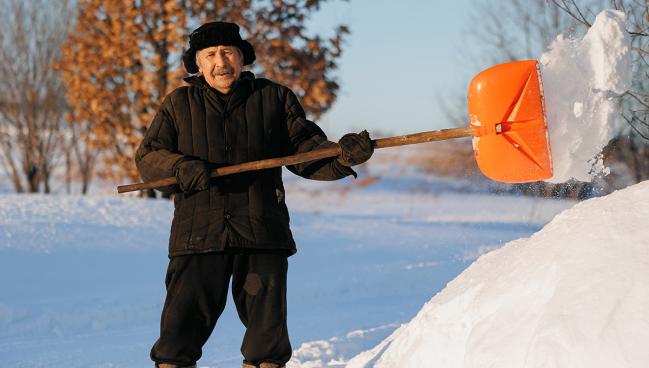Temperature Highs and Lows Leave Their Mark on CV Deaths
To adapt to a changing climate, communities should consider both cold- and heat-related risks, as well as local demographics.

Worldwide, nearly one in 10 cardiovascular deaths may be attributed to “nonoptimal” temperatures, according to a study that tracked mortality over a 20-year period.
“The findings indicate that, globally, 1,801,513 cardiovascular deaths yearly were linked to nonoptimal temperatures over the two decades, comprising 8.86% of total global cardiovascular deaths, or 26 excess cardiovascular deaths per 100,000 people,” report investigators led by Samuel Hundessa, PhD (Monash University, Melbourne, Australia).
While prior research has linked extreme heat to increased CV mortality and indicated that it is likely to worsen in coming years due to climate change, Hundessa and colleagues found that the vast majority of temperature-related CV mortality was associated with cold weather (8.20%) rather than heat (0.66%). Additionally, only a fraction of the heat- or cold-related CV deaths were associated with extreme temperatures.
“Although the current study noted a slightly lower burden of heat-related cardiovascular mortality compared with previous findings, it exhibited a slight upward trend, which aligns with reports of increasing heat-related cardiovascular deaths,” Hundessa and colleagues say. “These findings highlight the need for global communities and governments to address both cold- and heat-related mortality burdens when planning for climate change adaptation.”
Commenting for TCTMD, Sadeer Al-Kindi, MD (Houston Methodist DeBakey Heart & Vascular Center, TX), said the findings of this study are in line with a recent analysis of the 1990-2019 Global Burden of Disease Study.
“The two studies used slightly different methodologies with respect to how the temperature is modeled in relationship to cardiovascular disease . . . but they give you consistent messaging that the burden of cardiovascular disease related to nonoptimal temperature is increasing over time,” he noted.
“There's a lesson to be learned here that there are areas where we need to think about mitigation strategies and adaptation strategies for cold-related temperatures, primarily. And areas where we need to focus on high temperature, and then other areas that are impacted by changes in both high temperature and low temperature. So, it kind of gives you a broad understanding of the geographic distribution of temperature changes and where implementation strategies may be needed.”
That being said, it may not be the whole story.
“An important finding by the investigators is that most nonoptimal temperature-related deaths, and particularly cold-related deaths, were attributed to days with only mildly cold temperatures,” writes Sameed Ahmed M. Khatana, MD, MPH (University of Pennsylvania, Philadelphia), in an accompanying editorial.
While biological mechanisms such as changes in stress hormones may explain why even mildly cold temperatures could be related to CV events and death, “most cardiac dysfunction, and changes to the inflammatory and thrombogenic milieu of the body, is believed to occur at more extreme temperatures,” Khatana notes. That leaves open the question of whether deaths that occur at milder temperatures are directly related to the weather itself or other mechanisms.
It kind of gives you a broad understanding of the geographic distribution of temperature changes and where implementation strategies may be needed. Sadeer Al-Kindi
Al-Kindi said a big question in his mind is changing demographics of the populations being studied over time. Specifically, a large population that is aging within a specific area may have increased CV risk by virtue of their aging, which could explain why even mildly cold temperatures could contribute to increases in CV death.
Central Asia Leads in Cold- and Heat-Related Deaths
For the study, published Monday in the Journal of the American College of Cardiology, Hundessa and colleagues analyzed CV deaths and temperature data from 32 countries. Within each location, they looked at daily temperatures and the percentiles of temperature as well as country-specific annual CV mortality rates.
Nearly 60% of all excess deaths occurred in Asia, followed by Europe (21%), Africa (12%), North and Latin America and the Caribbean (9.29%), and Oceania (< 1%).
More narrowly, Central Asia had the most excess CV deaths, with a cold-related death rate that was four times greater than the global average. Eastern Europe and Western Asia also had high rates of excess CV death, with Eastern Europe exceeding the cold-related global average by more than threefold.
Some notable variations were seen in heat-related deaths, with the highest rates in Central and Western Asia. As with the cold-related deaths, Central Asia had the highest excess CV death rates attributable to heat, followed by Western Asia and regions of Oceania.
Comparing the periods of 2000-2003 to 2016-2019, the researchers saw a decline of 0.53 percentage points in cold-related excess CV death and an increase of 0.20 percentage points in heat-related excess death. The combined cold and hot nonoptimal temperature-related excess death ratio during this period declined by 0.33 percentage points, with all regions except Southeast Asia showing a decline in cold-related deaths.
Regions that saw declines in cold-related CV death over the study period included North America, Europe, Eastern and Southeastern Asia, and sub-Saharan Africa near the equator. Tropical/subtropical areas were more likely than other regions to see a slight increase in heat-related deaths.
In the editorial, Khatana notes that “while the underlying mechanism linking mildly cold temperatures to cardiovascular deaths is unclear, if greenhouse gas emissions continue increasing, the rise in heat-related deaths may eventually outnumber the decline in cold-related deaths.”
To TCTMD, Al-Kindi said the study findings regarding the risk of cold temperatures is a good reminder that climate change doesn’t necessarily mean everything is warming up.
“The relationship between temperature and heart health is complex, to say the least, because what we know is that the extremes of temperature can cause increases in heart disease events, but what we haven’t known exactly is what [are the] cutoffs for temperature and whether this has any local context,” he said. Part of ongoing research is trying to determine whether there is an optimal CV temperature, or a temperature at which CV health might be improved, he added.
L.A. McKeown is a Senior Medical Journalist for TCTMD, the Section Editor of CV Team Forum, and Senior Medical…
Read Full BioSources
Hundessa S, Huang W, Zhao Q, et al. Global and regional cardiovascular mortality attributable to nonoptimal temperatures over time. J Am Coll Cardiol. 2024;83:2276-2287.
Khatana SAM. Climate change and cardiovascular mortality: will fewer cold days balance out more hot days? J Am Coll Cardiol. 2024;83:2288-2290.
Disclosures
- The study was supported by the Australian Research Council and the Australian National Health and Medical Research Council.
- Hundessa, Khatana, and Al-Kindi report no relevant conflicts of interest.





Comments